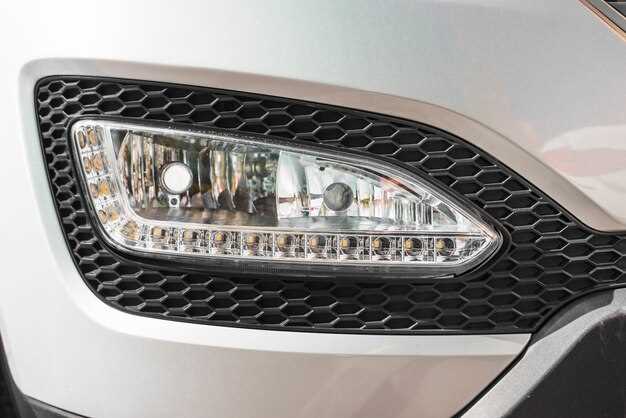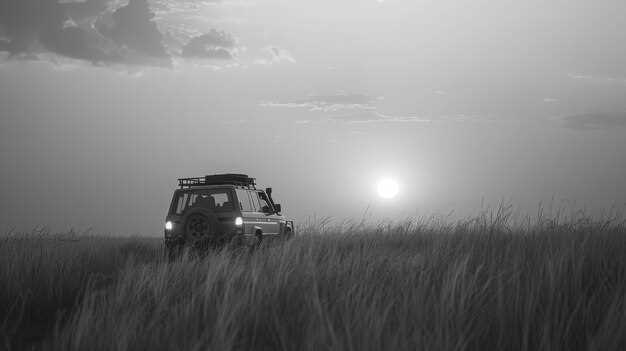
When it comes to off-road adventures, visibility is paramount. Whether navigating through dense forests, rocky terrains, or dark trails, having reliable lighting can make the difference between a successful journey and a potentially hazardous experience. LED light bars have become increasingly popular among off-road truck enthusiasts, providing powerful and efficient lighting solutions that can enhance safety and performance.
In this article, we’ll explore the top LED light bars available for off-road trucks, examining their features, benefits, and what makes them stand out in a crowded market. From versatile mounting options to robust durability, we will highlight the essential aspects that every off-roader should consider when selecting the perfect light bar for their vehicle. For those seeking to elevate their night driving experience, understanding these key offerings is crucial.
As technology advances, LED light bars have evolved significantly, offering superior brightness, energy efficiency, and versatility. With options ranging from compact models to high-intensity units, these lights not only illuminate the path ahead but also add to the aesthetic appeal of off-road trucks. Join us as we delve into the best choices that cater to diverse needs and preferences, ensuring that your off-road escapades are both safe and enjoyable.
Choosing the Right Size and Brightness for Your Off-Road Needs
The selection of size and brightness in LED light bars is crucial for enhancing visibility during off-road adventures. A proper understanding of the metrics will ensure safety and improve the overall driving experience.
Size Selection: The size of the light bar can greatly affect its performance. Typically, light bars range from 6 inches to 50 inches or more. Shorter bars (6 to 12 inches) are suitable for compact vehicles and can be mounted on smaller areas, such as bumpers or roofs. Medium-sized bars (20 to 30 inches) provide a balance between coverage and fit, making them ideal for mid-sized trucks or SUVs. For larger vehicles, opt for full-size bars (32 inches and above) which deliver extensive illumination and coverage, especially on wide trails.
Brightness Levels: The brightness of an LED light bar is measured in lumens. Higher lumens indicate greater brightness. For off-road driving, a light bar with a minimum of 3,000 lumens is recommended to provide sufficient coverage in dark environments. However, for serious off-roading, consider light bars with 10,000 lumens or more. Brightness should be balanced with beam pattern; a combination of spot and flood beams maximizes visibility in different terrains. A good rule of thumb is to select a bar that offers a 30-degree spot beam for long-distance visibility and a flood beam for a broader spread.
Consideration for Mounting: The mounting location can influence both the size and effectiveness of the light bar. Consider roof mounts for optimal height, offering a wider angle of visibility. Bumper mounts are ideal for a lower center of gravity but may limit light spread. Ensure the chosen size fits comfortably within the vehicle’s dimensions while optimizing the angle for maximum illumination.
Conclusion: Ultimately, selecting the right size and brightness of LED light bars is a balance between personal preference, vehicle specifications, and the type of off-road activities planned. Assess your needs thoroughly and choose the appropriate light bar to enhance your off-road experience effectively.
Comparison of Popular Brands and Their Key Features

Rigid Industries is a leader in the LED light bar market, renowned for their high-quality products. Their light bars offer impressive brightness and durability, making them suitable for extreme off-road conditions. Many models feature a patented Hybrid Optics System that enhances light output and efficiency, providing exceptional performance even in adverse weather.
Osram has established itself as a top choice for off-road enthusiasts thanks to their advanced LED technology. Their sound engineering ensures long life and reliability. Notably, the Osram LED light bars are known for their minimalist design and versatility, with several models adaptable for various applications. The high lumen output combined with a wide beam angle offers excellent visibility on trails.
Garmin focuses on blending technology with function. Their LED light bars often integrate smart features, such as Bluetooth connectivity for easy operation and customization via mobile apps. Garmin bars are praised for their sleek designs and lightweight build, providing an effective solution without adding excessive weight to vehicles.
Nilight has gained popularity due to its cost-effective solutions. Their light bars deliver good performance at a competitive price point, making them a go-to for budget-conscious buyers. Nilight products are generally easy to install and come with necessary mounting hardware, which is a significant advantage for DIY enthusiasts.
KC HiLiTES is known for its rugged and aggressive styling, providing not just illumination but also an aesthetic upgrade for off-road vehicles. With excellent heat dissipation properties and solid build quality, KC HiLiTES products are designed for long-term use. Their wide range of light patterns caters to different needs, from flood to spot lighting.
Each brand has distinct offerings tailored to different user needs, balancing quality, price, and additional features. Choosing the right LED light bar involves considering specific requirements, such as brightness, beam pattern, and any additional functionalities desired. This comparative insight allows off-road truck owners to make informed decisions based on their preferences and driving conditions.
Installation Tips and Best Practices for Optimal Performance

Proper installation of your LED light bar is crucial to maximize its performance and longevity. Follow these essential tips to ensure a successful setup.
1. Choose the Right Location: Select a mounting location that provides a clear line of sight and optimal illumination of the area you wish to light up. Common positions include above the windshield, on the front bumper, or on the roof. Ensure the light bar is not obstructed by any vehicle components.
2. Use Quality Mounting Hardware: Utilize high-quality brackets and hardware to secure the light bar. Stainless steel or aluminum mounts are recommended for their durability and resistance to rust. Ensure all screws and bolts are tightened adequately to prevent vibration-induced loosening.
3. Wire Routing: Plan the wiring route to avoid pinching, abrasion, or exposure to heat sources. Use grommets, clips, and cable ties to secure wires along the body of the truck. This prevents damage and ensures a neat installation.
4. Ground Connection: Establish a solid ground connection to minimize electrical interference and ensure reliable performance. Use a dedicated ground point, ideally close to the light bar, to enhance conductivity.
5. Correctly Size the Wiring: Use appropriately gauged wires based on the light bar’s power requirements. Undersized wires can lead to voltage drop, resulting in reduced brightness and potential overheating. Consult the manufacturer’s guidelines for recommendations.
6. Install a Switch: Incorporate a switch that is easily accessible from the driver’s seat. A toggle or dash-mounted switch minimizes distraction while driving. Ensure the switch is rated for the electrical load of the light bar.
7. Position the Light Bar at an Angle: For optimal light distribution, consider angling the light bar slightly downward. This adjustment helps reduce glare for oncoming traffic while maximizing illumination of the desired area.
8. Test the Installation: Before taking your vehicle off-road, conduct a thorough test of the light bar. Check all connections, ensure the lights operate correctly, and assess the brightness and coverage in various environments.
9. Regular Maintenance: Periodically inspect your light bar for signs of wear, damage, or corrosion. Clean the lenses to maintain clarity and performance. Address any wiring issues promptly to avoid further complications.
Following these installation tips and best practices will help ensure your LED light bar operates at its best, providing reliable lighting during your off-road adventures.




